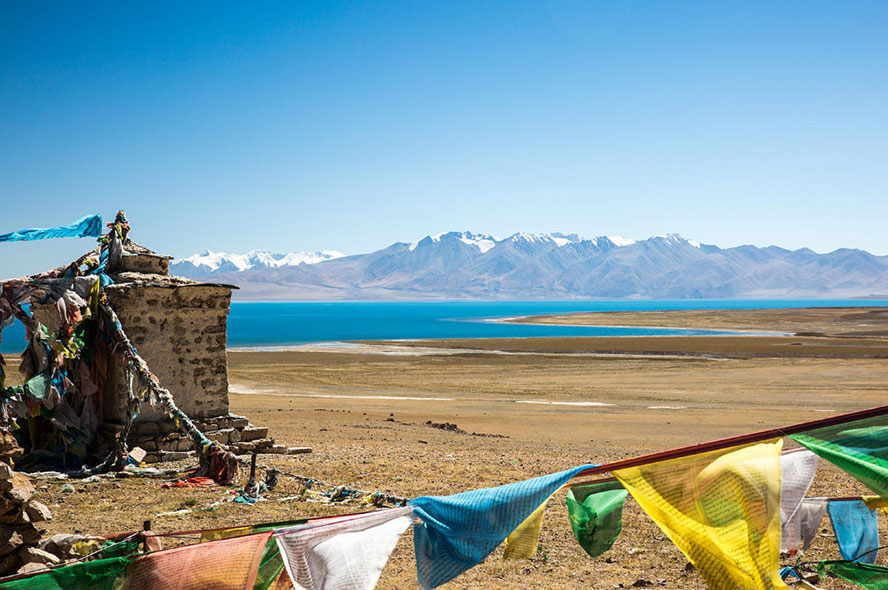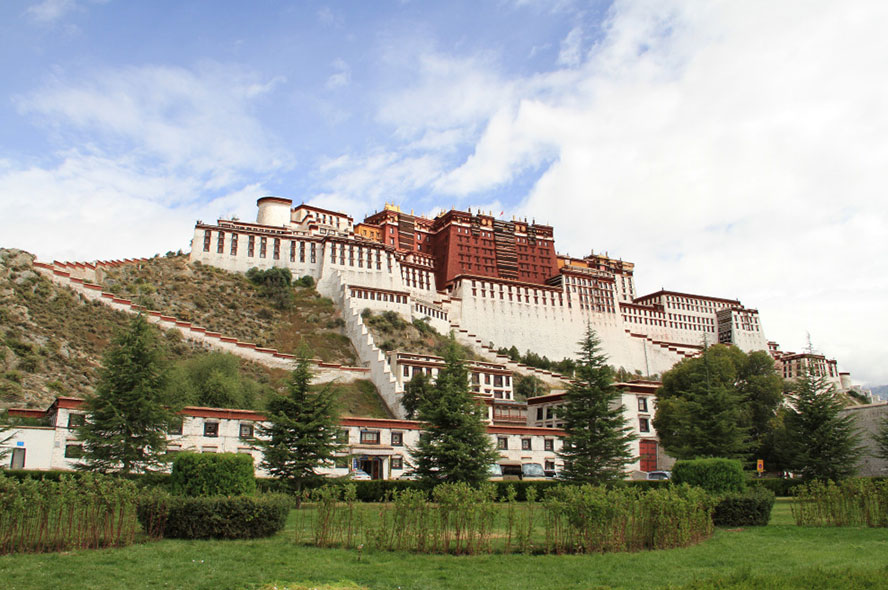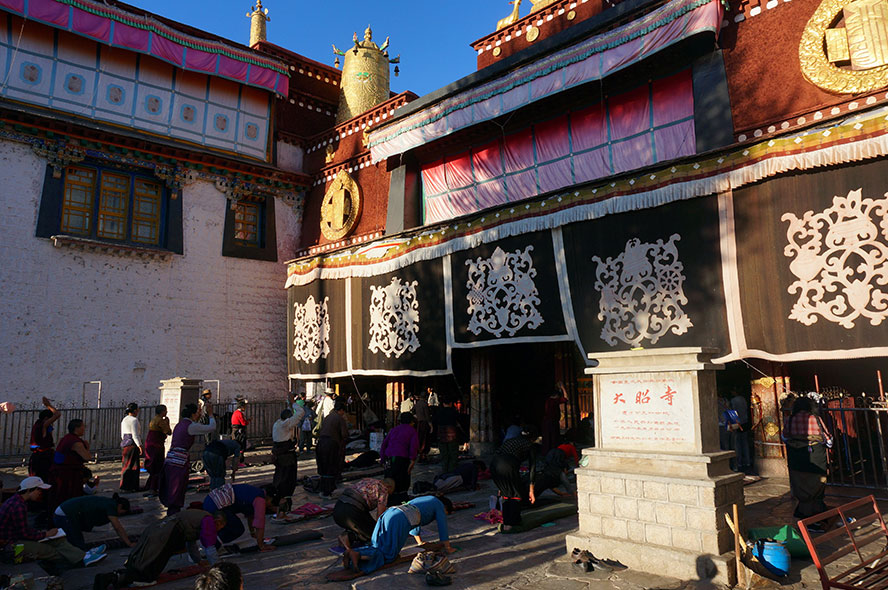Going to Tibet by train is exciting and gratifying. And this is also an extraordinary experience for foreigners, as this would be a long journey and all the things they would encounter while taking the train is unknown, which makes the train journey more interesting. Therefore, some people want to get information about relevant processes for taking the Qinghai-Tibet train, as well as the experience and feelings of riding on the train, so that they can make full preparation for the train journey.
After interviewing a number of passengers, we have prepared the following passage for you, which is about the experience of taking the Qinghai-Tibet train. If you still have questions after reading the passage, please feel free to consult us.
Train ticket collection process
There are many ways for you to buy a train ticket to Tibet: You may buy it online, you may ask a friend in mainland to help you buy it, or you may buy it by a travel agency. No matter which way you choose, all you need to provide is your passport number, the number of your Mainland Travel Permit for Taiwan residents, or the number of your Mainland Travel Permit for Hong Kong and Macao Residents. Tibet Travel Permit is not needed at this stage, but you need to show it to the staff when you collect the ticket.
Sites for ticket collection
Railway stations of all sizes in mainland China have a clear division of functional areas, with the "Waiting Room" and the "Ticket Lobby" being two independent and the most important functional areas. Because of the development of technology, there are many machines for self-ticket buying and collecting in railway stations, but passengers to Tibet still need to get the ticket from manual window by showing their identity-proved documents and Tibet Travel Permit.
Time for ticket collection
Passengers are generally recommended to collect the ticket one day before the departure date, so that their travel plan wouldn’t be affected. If you plan to get the ticket on the day of departure, please arrive at the train station at least 3 hours in advance. There are many functional divisions in train stations in big cities and you may be easy to get lost and go to the wrong place, so it is important to reserve enough time for ticket collecting.
Ticket collection process at the manual window
When you arrive at the train station, you need to firstly ask the staff or other enthusiastic passengers about the location of the manual window, after which you need go to the window to queue up for ticket collection. If there are many people in the queue, you had better ask the staff in advance if foreigners could also collect tickets at the manual window. If the answer is “Yes”, then you can queue up for the ticket. When you are collecting the ticket, you need to provide relevant documents such as your passport, visa, Mainland Travel Permit for Taiwan residents, Mainland Travel Permit for Hong Kong and Macao Residents, and your Tibet Travel Permit. There is usually no additional fee for collecting tickets at the manual window.
You need to provide your Tibet Travel Permit when you collect the ticket
You can’t successfully get a paper ticket without providing a Tibet Travel Permit, so please ensure that you have obtained your Tibet Travel Permit before collecting the ticket. If you choose a train route to Tibet from us, we will help you handle things such as getting your Tibet Travel Permit and buying the train ticket.
Ticket checking process
After getting the ticket at the ticket lobby, the next step you should do is to wait for the train in the waiting room. Before boarding the train, there is still a necessary step: having yourself (once), your ticket (three times), and your luggage (once) checked.
The first time to have your ticket checked is when you enter the waiting room
You need to bring your own identity-proved document and train ticket to board the train, which means that the identity information on the ticket should be identical with the information on your documents. There are multiple machines at the entrance of the waiting room to check your identity information. And you can also have your identity checked by the staff. If there are many people in the queue, you might need to wait for about 10 minutes. Therefore, you should have your ticket checked at least 1 hour before the train departs.
The second time to have your ticket checked is when you go to the platform from the waiting room
The waiting room is the most populated area in a train station in mainland China. After entering the waiting room, you need to find the designated waiting area according to the information showed on the screen, after which you can find a seat and wait for the boarding time (15-30 minutes before the train departs). The train ticket is a pass for entering the platform, so when you go to the platform from the waiting room, you need to have your ticked checked the second time by machines or staff. You don’t need to show your identity-proved documents and your Tibet Travel Permit this time.
The third time to have your ticket checked is when you get on the train at the door of corresponding carriage
After entering the platform, you need to find the corresponding carriage and boarding site according to the information on the ticket. There will be train conductors at the door of the carriage to check your ticket. And this time you not only need to show your ticket to the staff, but also your identity documents as well as your Tibet Travel Permit. You are allowed to get on the train when the staff has ensure that your information on the ticket is identical with that of your documents and the permit. In case you should spend a lot of time on ticket checking, you are suggested to keep your own documents and ticket and not to leave them to other people for management.
Your luggage also needs to go through a security check when you enter the waiting room
After the first time of ticket-checking, your luggage also needs to go through a security check. You need to put all your luggage (including the carry-on bags) on the security instrument. Different from the security check at the airport, electronic devices such as computers and cameras don’t need to be taken out separately. As long as there is no prohibited item such as controlled knives in the luggage, you can safely go through the security check and enter the waiting room. If you accidentally carry a prohibited item such as a fruit knife, please take it out and give it to the staff in the train station.
Personal security check is also conducted when the luggage is going through a security check. After putting all your luggage on the security instrument, you need to go through a security gate to have yourself checked. There are also railway staff beside the security gate, with a hand-held security device in their hands. The whole process of personal check will be finished within only a few seconds to see if you had put prohibited items in your clothes pockets. For the safety of yourself, please cooperate with the work of security check.
Notes on taking photos with the train
If you plan to take a photo with the stationary Qinghai-Tibet train on the platform, please enter the waiting room in advance and go to the railway platform as early as possible. There are trains shuttling on both side of the platform. For your safety, please do not stay too long or run at the platform.
Living experience on the train
The train ticket we purchase for tourists is generally a soft sleeper train ticket. And in the peak season, it is very difficult to buy even a hard sleeper train ticket.
Facilities in a soft sleeper compartment
The soft sleeper carriages are usually located at the rear of a train. There are about three or four soft sleeper carriages on a train, with eight compartments in each carriage. There are four bunks in each soft sleeper compartment (two lower bunks and two upper bunks), so one compartment can accommodate 4 people.
There is an independent oxygen outlet for each bunk, which can be used through an oxygen suction tube. Passengers can sit or lie down on the lower bunks, chatting with each other face to face. There is also a small table between the two lower bunks for passengers to put supplies such as cups and snacks.
Outside each compartment is a corridor where a row of foldable seats is available. Passengers can sit on the seats when they want to enjoy the sightseeing from the windows.
The biggest advantage of a soft sleeper compartment is the lockable door. All the light and sounds outside can be blocked when they close the door, so that they can enjoy their own space within the compartment.
Dining experience in the dinning carriage
There is only one dining carriage on a train. The windows in the dining carriage are broader than those of other carriages, so the dinning carriage is a perfect place for sightseeing. There are generally 8-10 dining tables in the carriage and each table can sit 4 people. Therefore, the dining car can only accommodate about 30 people in one time. Passengers are recommended to reserve a table and order dishes in advance, and then go to the dinning carriage on time for meals.
There are two options for passengers to order dishes in the dinning carriage. One is the set meal. A set meal may include four dishes and one soup, or five dishes and one soup, etc. Therefore, the prices of different set meal are different. Passengers can choose a set meal in accordance to their own needs. The other is the à la carte. It refers to a practice of ordering individual dishes from a menu, which is convenient for passengers to eat alone or for two passengers. Besides, bento is also available on the train. So for those who don’t want to have meals in the dinning carriage, they can buy a bento from the staff and have meals at their seats or in the compartments.
Dishes in the dinning carriage is made based on the purchased ingredients, but they are mostly stir-fried dishes. The dishes can be spicy or non-spicy, you can tell the staff when you order the dishes.
Hot water is provided on the train
You can get hot water with your own cup from the dispensers at both ends of the carriage. The water is mainly for drinking. Since the water is very hot, please don’t wash your hands with it directly.
The toilets and washbasins on the train
There are generally 2 toilets between two carriages, so there are totally 4 separate toilets at the ends of each carriage. The toilets are usually squat-style. Under normal circumstances, there is generally no odor in the toilets.
Generally speaking, the number of passengers in the soft sleeper carriages is less than that of the hard sleeper carriages, so environment of the toilets in the soft sleeper carriages is better.
There is a washbasin and an oversized mirror outside each toilet for passengers to wash hands, brush teeth, and do their makeup every day. Only cold water is available at the washbasin and the amount of water is small, so please use the water reasonably and don’t waste water.
Oxygen supply systems on the train
There are two oxygen supply systems on the train. One is the dispersion-mode oxygen supply system, which spreads oxygen to the air through the air-conditioning system on the trains. The other is the distribution-mode oxygen supply system. Passengers can receive oxygen through the oxygen outlets near the bunks or under the seats.
Note: Please don’t carry portable oxygen tanks to the train, as they can’t pass through the train security check.
Entertainment on the train
It will take as long as over 20 hours to get to Tibet by train, so how to spend the time on the train has become a question for most of the tourists. Under normal circumstances, after the train goes through Xining, you will marvel at the scenery outside the train along the following train journey. At this time, taking pictures of the scenery would become your only entertainment. An no matter how many pictures you take, you wouldn't feel content.
In addition, chatting with friends or strangers in the compartment is also a good way of entertainment. There are many topics you can talk about, such as customs, history, and culture. In this way, you can not only spend the time on the train, but can also learn something new from the casual talks.
How to get to the hotel after arriving at Lhasa Station?
Passenger will be informed that the train is about to arrive at Lhasa Station through the broadcast in three languages: Chinese, Tibetan, and English. After hearing the broadcast, please pack up all the luggage as soon as possible and get ready to get off the train.
How to go out of the train station?
You don't need to show your identity-proved documents when you get off the train. Just carry your own luggage and follow the instructions to go out of the station. Please do not take pictures at the platform of the train station. If you can’t read the instructions, just follow the crowd to go out of the station.
When you arrive at the exit, you need to have your ticket checked for the last time by showing your identity-proved documents, Tibet Travel Permit, and train ticket to the staff. After that you can go out of the station and see the blue sky and white clouds above in Tibet.
Please don't loiter and take photos at the square of Lhasa Railway Station. You should find your driver and tour guide who will pick you up the station as soon as possible, and then return to the hotel in Lhasa city.
Pick up service of travel agency
Pick up service is usually included if you choose a package tour from our travel agency. The driver and the tour guide will usually wait for you in the parking area on the right side of the exit. If you can't find the driver and the tour guide after arriving at the station, please contact the staff who arrange the tour for you, so that we can make arrangement and you can arrive at the hotel as soon as possible.
Frequently asked questions about taking the Qinghai-Tibet train
Is there a baggage allowance for the Qinghai-Tibet train?
There are certain baggage allowances for the Qinghai-Tibet train: 10kg per children (including children below 1.2m) and 20 kg per adult. Besides, the sum of the length, width and height of each item shall not exceed 1.6 meters and rod-shaped items shall not exceed 2 meters. Folding wheelchairs for the disabled are not included and can be bring to the train for free.
In addition to the baggage allowances, many other items are also prohibited to bring to the train, such as various kinds of knives, and flammable and explosive materials. For other prohibited items, please consult our sales person.
Can passengers take a shower on the train?
There is no special place for shower on the Qinghai-Tibet train, so passengers can’t take a shower while taking the train.
When you take a train to Tibet from Beijing , Shanghai, or Guangzhou, you need to spend two nights on the train. If you really want to take a shower, there is only one way to solve this problem: Get hot water from the hot water dispenser with your own outdoor folding small washbasin. Then adjust the water temperature by adding cold water from the washbasin outside the toilet. And at last you can wipe your body with a towel in the closed soft sleeper compartment or the toilet.
Can passengers smoke on the train?
There are oxygen supply devices inside the train and it is very dangerous to smoke when the train is spreading oxygen, so smoking is prohibited on the train. When the train arrives at large train station, it will stay for more than five minutes. Therefore, you can get off the train to smoke at the platform during this period. But do remember to stub out the cigarette when you get on the train.
Can passengers get off the train to take photos when then train is making stopovers?
Scenery between the Xining - Lhasa section is the most scenic along the Qinghai-Tibet Railway. There are three main parking spots along this section: Delhi, Golmud and Naqu. The train will make longer stopovers at these three stations. And passengers can get off the train to enjoy the fresh air, take pictures, and smoke, etc. After the train enters the plateau, the temperature difference inside and outside the train is getting larger. As there is air conditioning on the train, it will be relatively warm inside the train and the temperature outside will be lower. Therefore, please put on more clothes when you get off the train.
General Experience on Train
Taking the Qinghai-Tibet train to Tibet is indeed very meaningful and challenging. You will spend more than 20 hours on the train by experiencing a different life and different ways of entertainment, which will become a memorable trip in your life. No matter which country or region you are from, you should take the Qinghai-Tibet train at least once. The above is the summarized experience in the Qinghai-Tibet train we prepared for you. For more questions about the Qinghai-Tibet Railway or the itinerary, please feel free to contact us.







































 Data in submission...
Data in submission...